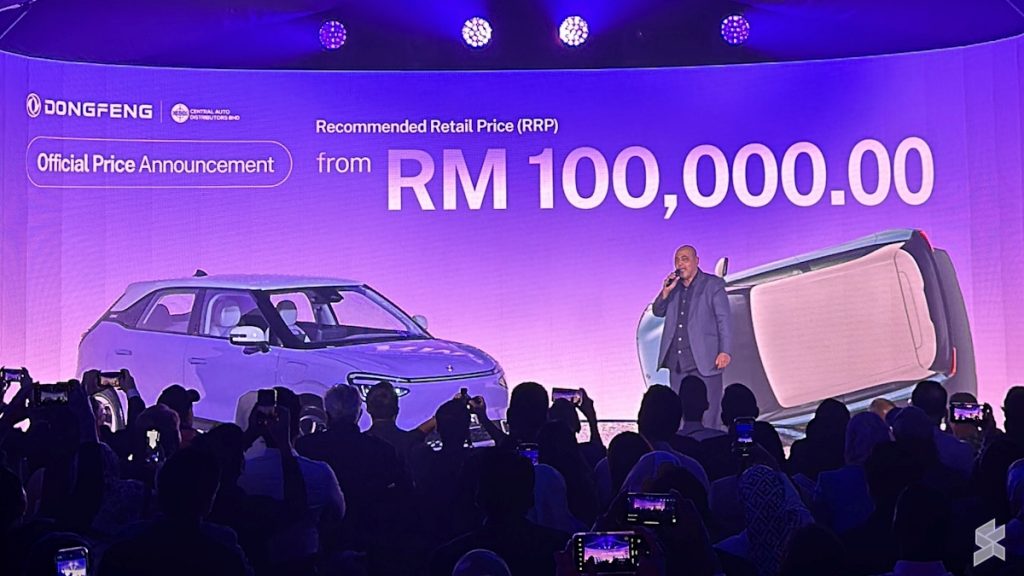Both OnePlus and ASUS announced their new flagship smartphones this year. Well, OnePlus’ technically launched at the end of last year, but its global variant arrived this year. In this article, we’ll compare those two smartphones, the OnePlus 12 vs ASUS ZenFone 11 Ultra. The two phones do look quite different, while they also provide different camera experiences and so on. There’s a lot to talk about here.
As per usual when it comes to comparisons, we’ll first list their specifications. Following that, we’ll compare the designs, displays, performance, battery life, cameras, and audio performance of these two smartphones. If you’re in the market for a large Android flagship, both of these devices fit the bill. Both of them also start well under $1,000, which is another reason you may be interested in getting one.
Specs
OnePlus 12 vs ASUS ZenFone 11 Ultra, respectively
– Screen size:
6.82-inch LTPO AMOLED display (curved, 120Hz LTPO, HDR10+, 4,500 nits)
6.78-inch LTPO AMOLED 2X (flat, 144Hz, 2,500 nits max brightness)
– Display resolution:
3168 x 1440
2400 x 1080
– SoC:
Qualcomm Snapdragon 8 Gen 3
– RAM:
12GB/16GB (LPDDR5X)
– Storage:
256GB/512GB (UFS 4.0)
– Rear cameras:
50MP (f/1.6 aperture, 23mm lens, 1.12um pixel size, Dual Pixel PDAF, OIS), 48MP (ultrawide, 14mm lens, 114-degree FoV, f/2.2 aperture, 0.8um pixel size, PDAF), 64MP (periscope telephoto, 0.7um pixel size, OIS, PDAF, 3x optical zoom, 6x “in-sensor” zoom)
50MP (wide, 24mm lens, gimbal OIS), 13MP (ultrawide, 120-degree FoV, f/2.2 aperture), 32MP (telephoto, 3x optical zoom, f/2.4 aperture)
– Front cameras:
32MP (f/2.4 aperture, 0.8um pixel size)
32MP (wide, f/2.5 aperture)
– Battery:
5,400mAh
5,500mAh
– Charging:
100W wired, 50W wireless, reverse wireless (charger included)
65W wired, 15W wireless, 10W reverse wired (charger not included)
– Dimensions:
164.3 x 75.8 x 9.2mm
163.8 x 76.8 x 8.9mm
– Weight:
220 grams
224 grams
– Connectivity:
5G, LTE, NFC, Wi-Fi, USB Type-C, Bluetooth 5.4
– Security:
In-display fingerprint scanner (optical) & facial scanning
In-display fingerprint scanner (optical)
– OS:
Android 14 with OxygenOS 14
Android 14 with ZenUI
– Price:
$799.99+
$899+
– Buy:
OnePlus 12 (Best Buy)
ZenFone 11 Ultra (Amazon)
OnePlus 12 vs ASUS ZenFone 11 Ultra: Design
Both the OnePlus 12 and ASUS ZenFone 11 Ultra are made out of metal and glass. The OnePlus 12 has a curved display on the front, while the ZenFone 11 Ultra utilizes a flat one. You’ll notice a centered display camera hole on both of those displays, along with very thin bezels. Both phones have physical buttons on the right-hand side only. The OnePlus 12 does have an alert slider on the left, though.
If we flip them around, you’ll notice immensely different camera islands. Both setups sit in the top-left corner, but the one on the OnePlus 12 is larger. It hosts three cameras, and it’s circular. The one on the ZenFone 11 Ultra is rather small in comparison, though it includes three cameras as well. Backplates on both smartphones are flat for the most part, but they do curve a bit towards the edges.
The two phones are quite similar in terms of size. The OnePlus 12 is technically slightly taller, narrower, and thicker. The difference is minimal, though. OnePlus’ flagship is also 4 grams lighter, which is not something you’ll notice. They feel similar in terms of weight when held side-by-side. The OnePlus 12 does offer IP65 certification for water and dust resistance. The ASUS ZenFone 11 Ultra comes with an IP68 certification. Both of them are quite slippery, and both feel like premium products. The build quality is very good. You’ll also be glad to know that they’re both comfortable to hold.
OnePlus 12 vs ASUS ZenFone 11 Ultra: Display
The OnePlus 12 features a 6.82-inch QHD+ (3168 x 1440) LTPO AMOLED display. That panel is curved, and it offers an adaptive refresh rate of up to 120Hz. Dolby Vision support is included, and the same goes for HDR10+ content. The maximum display brightness this display offers, in theory, is 4,500 nits. The Gorilla Glass Victus 2 protects the panel. The screen-to-body ratio is around 91%, by the way.

The ASUS ZenFone 11 Ultra includes a 6.78-inch fullHD+ (2400 x 1080) LTPO AMOLED display, which is flat. It has an adaptive refresh rate of up to 144Hz, but do note you’ll get that high in specific games only. The display usually goes up to 120Hz. HDR10 content is supported, while the peak brightness is 2,500 nits. The screen-to-body ratio is around 88%, while the Gorilla Glass Victus 2 protects this display.
Both of these displays are great, no doubt about that. The OnePlus 12 does have the advantage of having a higher resolution and getting a bit brighter. The thing is, most people won’t even notice the difference. Displays on both ends are vivid, offer great viewing angles and deep blacks. The touch response is also very good. You’ll have a great experience with both of these panels. Just remember one is curved, while the other one is flat, plus there’s a resolution difference to consider.
OnePlus 12 vs ASUS ZenFone 11 Ultra: Performance
The Snapdragon 8 Gen 3 fuels both of these smartphones. That’s the most powerful processor Qualcomm has to offer at the moment. Both phones also offer LPDDR5X RAM, up to 16GB of RAM. UFS 4.0 is used on both ends as well. In other words, both companies used the very best performance-related components that could find, which is always good to hear. You’ll be glad to know that both phones do deliver in the performance department too.
Everything you end up doing on these two phones will be snappy, at least it was for us. They can multitask like nobody’s business, and perform day-to-day tasks without breaking a sweat. The ZenFone 11 Ultra’s software is close to stock Android in terms of look, but it has a ton of useful features on top of it. OxygenOS comes pre-installed on the OnePlus 12, and it’s quite a bit different than stock Android, but the performance is outstanding.
That goes for gaming too, actually. When we played Genshin Impact, both smartphones did a great job. The OnePlus 12 was slightly cooler after a one-hour session, but neither phone had issues with the game. They both got warm, but the performance did not suffer at all. 3D Mark’s most demanding test did manage to raise the temperature of the ZenFone 11 Ultra quite a bit, but that’s not something you should be worried about. We were not able to replicate that, not even with demanding games, so… it’s not exactly something to worry about. The OnePlus 12 does have better cooling, though.
OnePlus 12 vs ASUS ZenFone 11 Ultra: Battery
The OnePlus 12 comes with a 5,400mAh battery on the inside. The ZenFone 11 Ultra, on the flip side, has a 5,500mAh battery. Both of these phones have quite large battery packs, does that reflect on their battery life, though? Well, both of them have good battery life, but the OnePlus 12 is a level above the ZenFone 11 Ultra in that regard. It managed to outperform it during our battery test, and we’ve seen the difference during general usage too.
When it comes to general usage, we managed to get up to 9 hours of screen-on-time on the OnePlus 12. The ASUS ZenFone 11 Ultra provided a bit less, 7-7.5 hours of screen-on-time. Do note that gaming was not a part of our usage on those days. If you count that in, the usage numbers go down. Also, we’ve used WiFi most of the day, and the signal was quite good. Your mileage may and probably will differ quite a bit. You’ll be using different apps, in different ways, in different places, and so on.
The OnePlus 12 supports 100W wired (80W in the US) charging, 50W wireless charging, and 10 reverse wireless charging. The ASUS ZenFone 11 Ultra, on the flip side, supports 65W wired, 15W wireless, and 10W reverse wired charging. The OnePlus 12 not only wins the charging comparison, but it also comes with a charger in the box, unlike ASUS’ flagship. Both phones can charge up really fast, though, a lot faster than phones from Google, Apple and Samsung.
OnePlus 12 vs ASUS ZenFone 11 Ultra: Cameras
Each of these phones has three cameras on the back. The OnePlus 12 includes a 50-megapixel main camera, a 48-megapixel ultrawide unit (114-degree FoV), and a 64-megapixel periscope telephoto camera (3x optical zoom). The ASUS ZenFone 11 Ultra, on the flip side, has a 50-megapixel main camera, a 13-megapixel ultrawide unit (120-degree FoV), and a 32-megapixel telephoto camera (3x optical zoom).


The images these two smartphones provide are considerably different. The colors that the OnePlus 12 can pull off are on another level, and the phone also tends to offer more contrasty shots. The ZenFone 11 Ultra’s photos tend to look a bit more processed, and the phone also tends to brighten up low-light shots more. The OnePlus 12 is not afraid to leave such images closer to real life.
Both ultrawide snappers do a good job of keeping the color science of the main camera. When it comes to telephoto images, we prefer the OnePlus 12 across the board, and that especially goes for high-zoom situations. That’s not surprising, though, as it does include a periscope telephoto camera. The ZenFone 11 Ultra is a good camera phone, but the OnePlus 12 is a level above.
Audio
Both of these phones have a set of stereo speakers built-in. Both sets are loud enough and are actually on a similar level in that regard. The sound quality is also very good on both. The speakers are well-balanced, and there’s even some bass included.
The ASUS ZenFone 11 Ultra even includes an audio jack. That’s not something you’ll find on the OnePlus 12, but you can always use its Type-C port for wired audio connections. Both smartphones are equipped with Bluetooth 5.4.



